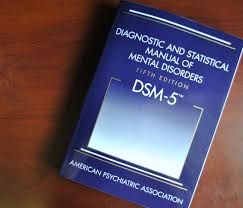Stockholm Syndrome
May 30, 2019 • 96 views
Stockholm syndrome is a psychological condition where hostages begin to identify closely with their captors, as well as with their aims and demands. Victims of the Stockholm syndrome develop "positive feelings toward their captors and sympathy for their causes and goals, and negative feelings toward the police or authorities" and such symptoms often follow the escaped victims back into their previously ordinary lives. The psychological response is a survival strategy for the victims. Situations where victims have exhibited this kind of response include hostage situations, long-term kidnappings, members of cults, prisoners of concentration camps etc.
This term was first used in 1973 after a bank robbery in Stockholm, Sweden where four hostages were held for six days. During this period, the hostages developed an emotional attachment towards their captors. One hostage even stated in a call to the Swedish Prime Minister, Olof Palme, that she trusted her captors totally but was fearful that she would lose her life in the event of a police assault on the bank. The hostages defended their captors (Jan-Erik Olsson and Clark Olofsson) after being released, disagreed to testify in court against them and raised money for their defence. They even visited them in prison.
Following the incident, the victims couldn't explain the reason behind their sympathetic feelings and lack of anger and bitterness toward their captors to psychologists.
One of the captors, Olsson, later stated the following in an interview:
It was the hostages' fault. They did everything I told them to. If they hadn't, I might not be here now. Why didn't any of them attack me? They made it hard to kill. They made us go on living together day after day, like goats, in that filth. There was nothing to do but get to know each other.

The most noteworthy example of Stockholm syndrome is the kidnapping of millionaire heiress Patricia Hearst by the Symbionese Liberation Army in 1974. Two months after her kidnapping, she was seen participating in a bank robbery in San Francisco with the group. She stated her sympathetic feelings towards the SLA publicly. She was arrested and served a few years in prison before her sentence was commuted. In 2001, US President Clinton granted her a full Presidential Pardon.
Psychologists believe that survival instinct lies at the heart of the Stockholm syndrome. The victims live in total dependence upon their captor and interpret small acts of kindness amidst horrible conditions as good treatment. The bond that develops between the victim and the captor takes only a few days to strengthen, signalling that the captive’s desire to survive triumphs over their hatred for the captor. Recovering from Stockholm syndrome involves counselling where the victims are aided to learn to decrease their survival-driven behaviours.
However, questions have been raised regarding the legitimacy of the phenomenon. The American Psychiatric Association excludes the syndrome from its Diagnostic and Statistical Manual of Mental Disorders (DSM). Also, FBI reports show that only 8% of kidnapping victims showed signs of Stockholm syndrome. At present, psychologists have expanded their comprehension of the syndrome from kidnappings to different forms of abuse.

It will be interesting to note that an opposite of the Stockholm syndrome called the Lima syndrome has been proposed where the abductors develop feelings of sympathy towards their hostages. The syndrome was named after an incident that occurred in Lima, Peru on 17th December, 1996, where members of a militant movement took over a party at the house of the Japanese ambassador but the captors freed most of the hostages within a few hours.
